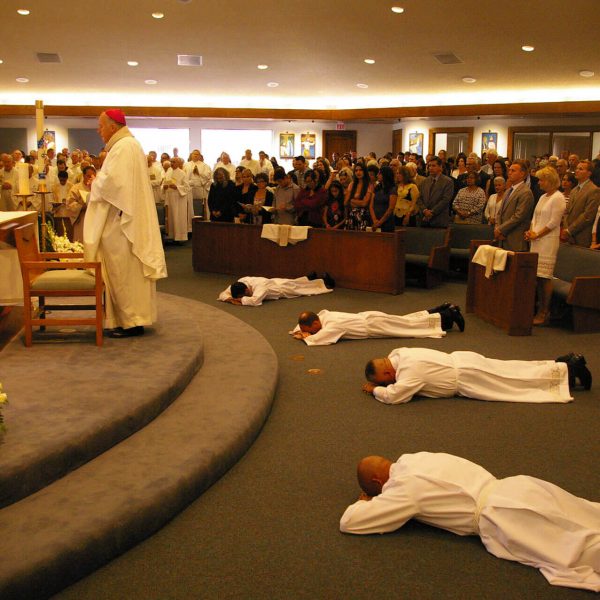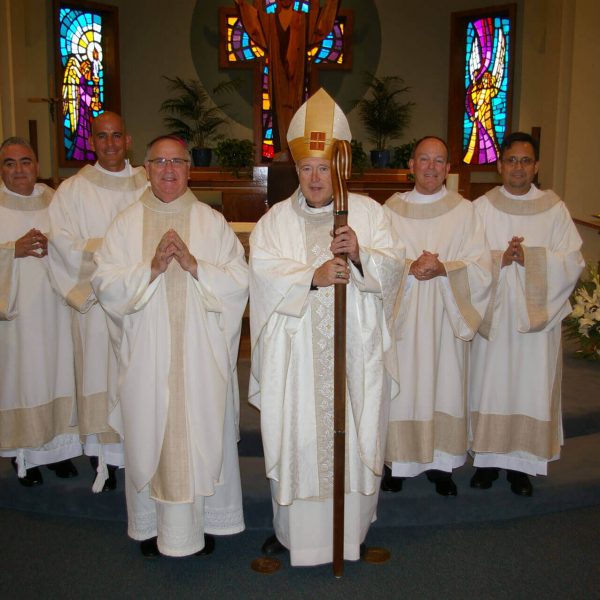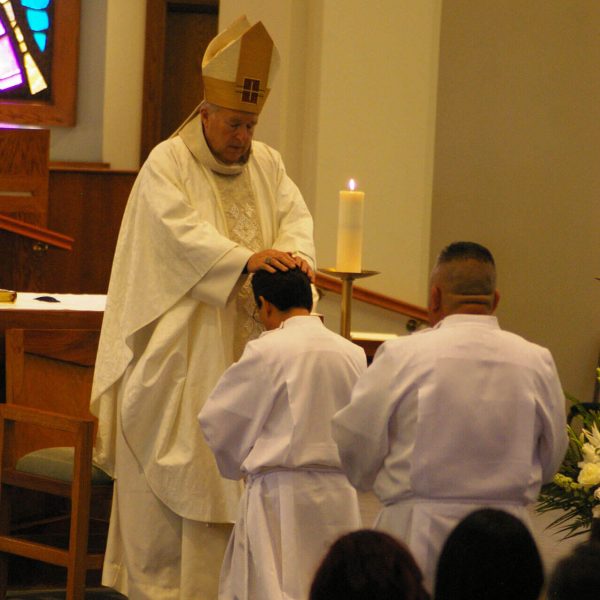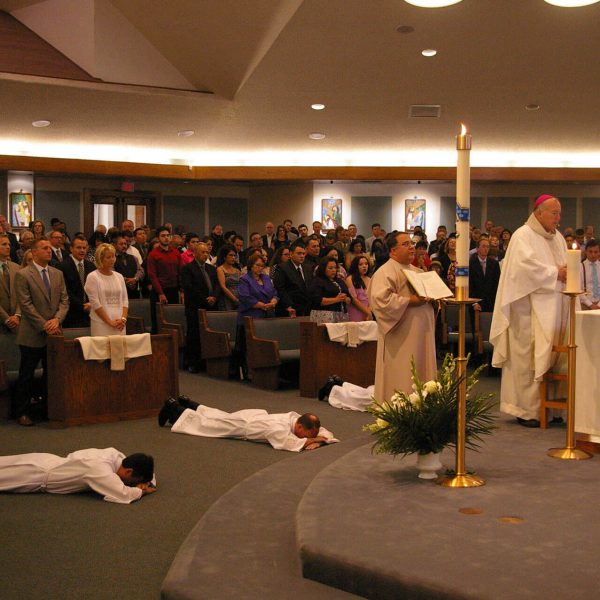SAN DIEGO — Four men were ordained to the permanent diaconate by Bishop Robert W. McElroy during a Mass celebrated June 2 at St. Catherine Laboure Church. The following are profiles of the Diocese of San Diego’s newest deacons:
Deacon Luiz Bueno
St. John of the Cross Parish,
Lemon Grove
About 13 years ago, Luiz Bueno’s marriage might have ended in divorce.
But thanks to Retrouvaille, a Church ministry that helps couples to heal broken marriages, he said, “I not only found the help I needed to … [keep my] family intact, but also found my way back to the Church after having been away for 30 years.”
Through Retrouvaille, he began to reflect on his faith and decided that believing wasn’t enough. He had to live out his faith daily.
“I began my journey of service alongside my wife, Erika,” said Bueno, an owner-operator truck driver for 23 years. “We made it our mission to help others the same way we had been helped. We began by serving with Retrouvaille, then serving at our parish, and prison ministry. This led us to the diaconate and our journey towards [diaconal] formation.”
Beginning in early 2011, he began praying about his vocation and researching what it meant to be a deacon. His pastor encouraged him to continue praying about it and also to become more involved in parish ministry.
“To serve the Church as deacon, to me, is to become the mouth, the hands and the feet of our Lord Jesus here on earth,” he said.
“I am looking forward to being able to serve in the name of the Church the ministries of charity,” he added, including “supporting the integrity of families by assisting couples with marriage problems.”
Deacon Terry Hannify
St. Michael Parish, Poway
“When will you become a deacon, Mr. Hannify?”
It was a question posed by one of Terry Hannify’s students on the last day of the final confirmation class that he taught at St. Michael Parish.
Throughout the preceding 11 years as a youth minister and catechist, Hannify hadn’t been able to shake the feeling that God was inviting him to make a deeper commitment.
“That following morning, Mary and I spoke at the breakfast table more seriously than before, about something neither of us had thought possible,” he recalled.
In short order, he entered the diocese’s diaconal formation program — and the rest is history.
“The work of the Holy Spirit is persistent as well as patient,” said Hannify, whose faith was nurtured in the Irish Catholic household in which he grew up and at St. Michael Parish, where his family has worshipped since 1967.
Hannify, who has worked for the past 41 years in the fields of banking and finance, looks forward to “becoming more and more a visible symbol of Christ’s presence wherever I find myself serving.”
“Serving at the altar, in the parish and in the community at large as a symbol of Christ’s presence, the community of deacons helps to represent the totality of the Local Church,” he said. “So, it will be my hope and prayer that my part of this growing presence will continue to help inspire others to do likewise.”
Deacon Alberto Moya
St. Anthony of Padua Parish, Imperial
As his family wrestled with the illness and death of his nephew, Alberto Moya sensed the call to a new vocation.
“His death brought new meaning to my prayer life and relationship to our Creator,” said Moya, who has worked for the U.S. government for more than 21 years. “I began to pray more for others than for my own needs.”
Through that prayer, he felt a desire to serve others, “especially those who are grieving and suffering,” and believed he might be called to the diaconate.
With the encouragement of his wife, Teresa, he prayed intensely for a year and a half for clarity about his vocation.
“Wives are the backbone of the diaconate formation program,” he said. “Without them, there is no story.”
Shortly after he discussed the diaconate with his pastor, Moya’s family endured another tragedy: his father-in-law’s death from cancer.
As an ordained deacon, Moya expects that he will be able to empathize with others and hopes “to reach out to those who are being neglected by society, those who have lost their faith, and those who are grieving the loss of a loved one.”
He said, “It is a humble privilege that Christ and the Church have called me to be part of the order of deacons; to serve the Church with Christ, in Christ and through Christ; to proclaim His word and share Christ’s mission of building up the kingdom through ‘diakonia’ [service].”
Deacon Charles Navarrete
St. Margaret Parish, Oceanside
About 20 years ago, while golfing with a priest friend, Charles Navarrete had an “ah-ha moment.”
At the 17th hole, the priest asked him about his newborn child: “What kind of example do you want to be to your son when it comes to your faith?”
“The implications of that question were limitless and changed the trajectory of my life forever,” said Navarrete.
Though he subsequently became a more serious Catholic, he still reacted with “disbelief” six years ago when asked to consider the diaconate. But after months of prayerful discernment, he opened himself to the possibility that this was indeed his vocation. Because his wife, Rebecca, was stationed abroad with the U.S. Navy, he waited almost a year and a half for her to return before beginning formation classes.
“In the grand scheme of things, becoming a deacon was never my goal or a specific intention of mine,” said Navarrete, who has been the business manager at St. Margaret Parish for the past 12 years. “However, having the chance to answer God’s call to serve the Church in a larger capacity is truly humbling.”
Navarrete, who is also co-founder of the nonprofit The Emiliani Project, which aids orphaned and abandoned children in Colombia, said deacons are privileged “to really get into the trenches with the people, to meet them where they are at in everyday life.”
“It is in those moments that a deacon can bring the face of Christ to those in need,” he said.













